Abstract
We compared three methods of stimulus preference assessment for verbal children and specifically evaluated the utility of a verbal choice procedure for assessing relative reinforcer value. Using a token system, relative preference for five categories of reinforcers, representing 15 different stimuli, was assessed by three methods: a reinforcer survey, a verbal stimulus-choice questionnaire, and a pictorial stimulus-choice procedure. Results showed that the verbal and pictorial stimulus-choice assessments accurately identified high- and low-preference categories for 3 of 4 participants. Survey results alone often rated multiple categories as high preference, were less likely to identify low-preference categories, and were less likely to correspond with the results of a reinforcer assessment.
Full text
PDF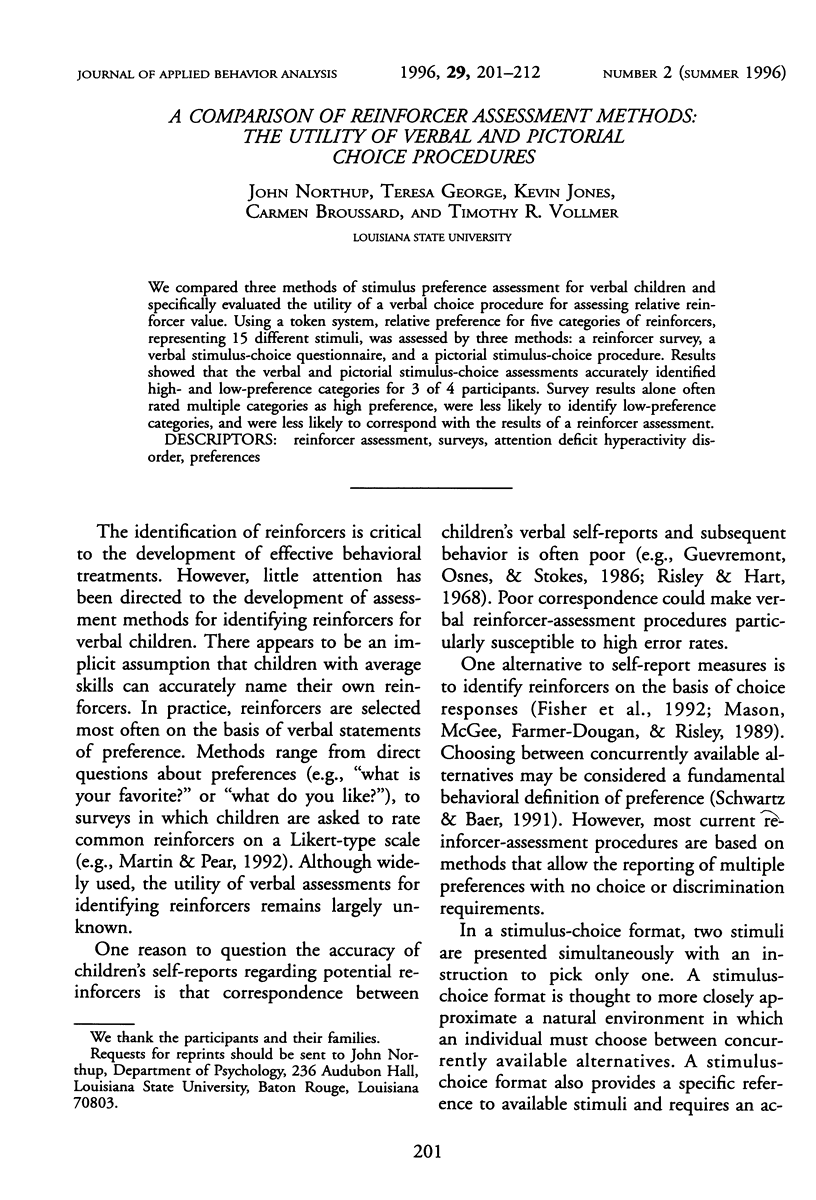
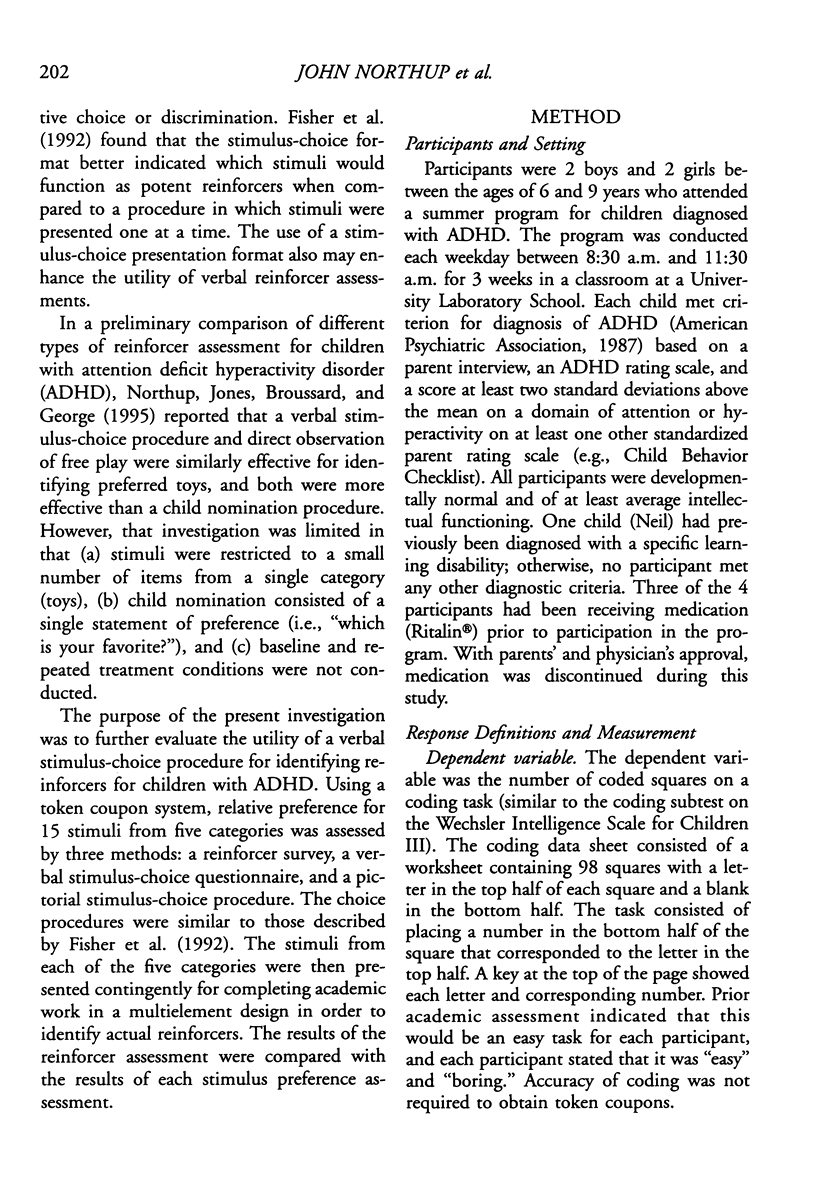
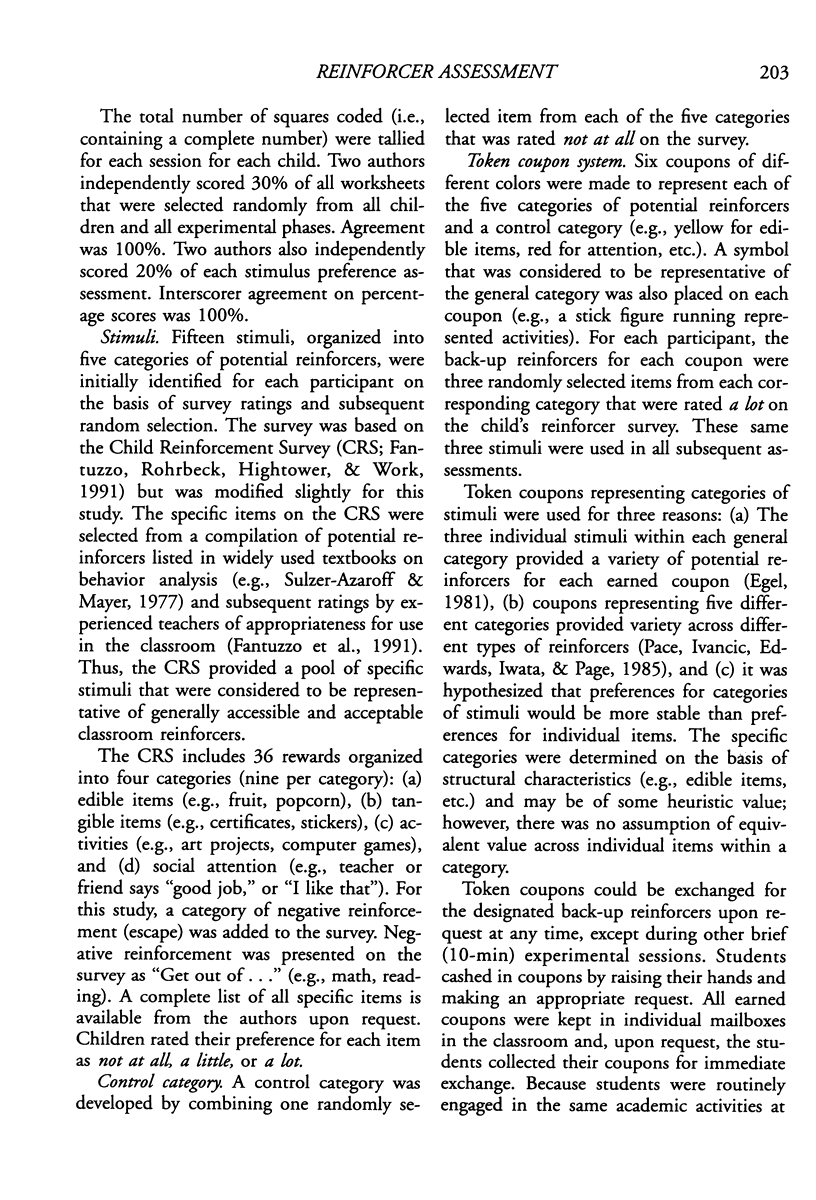
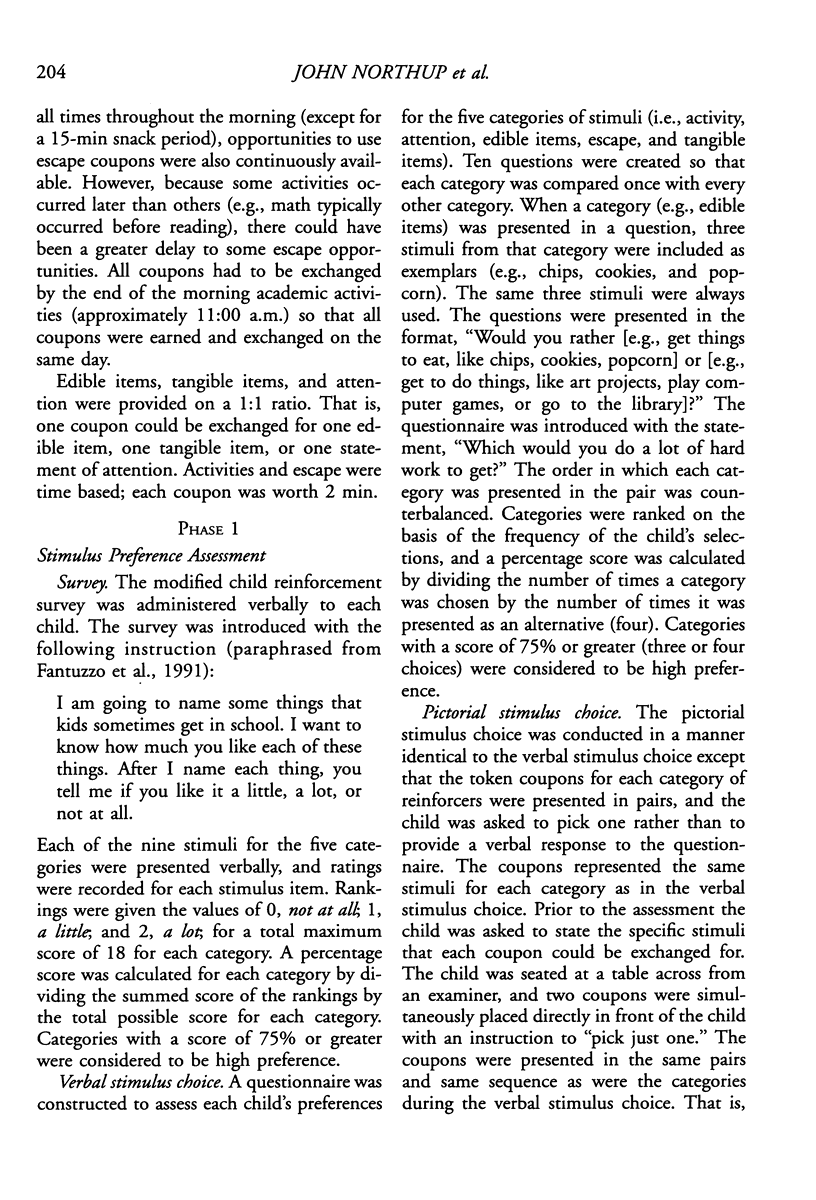

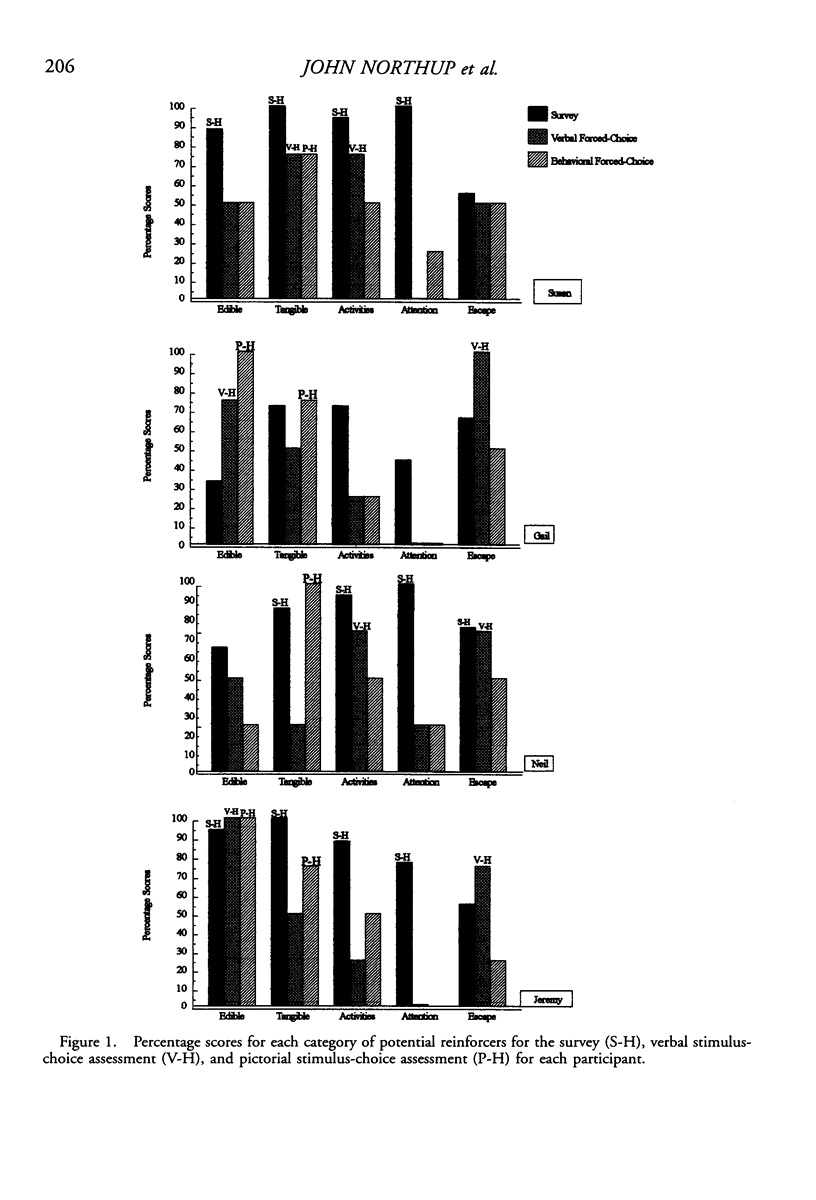
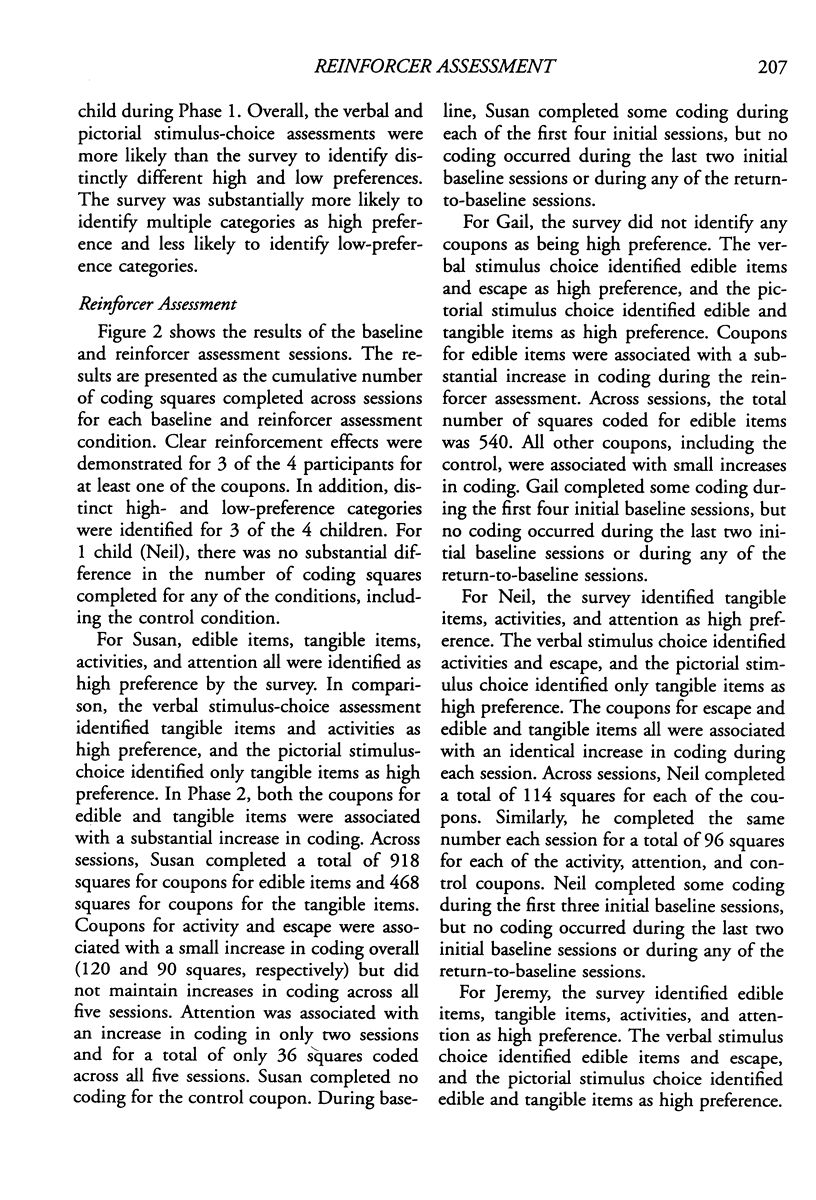
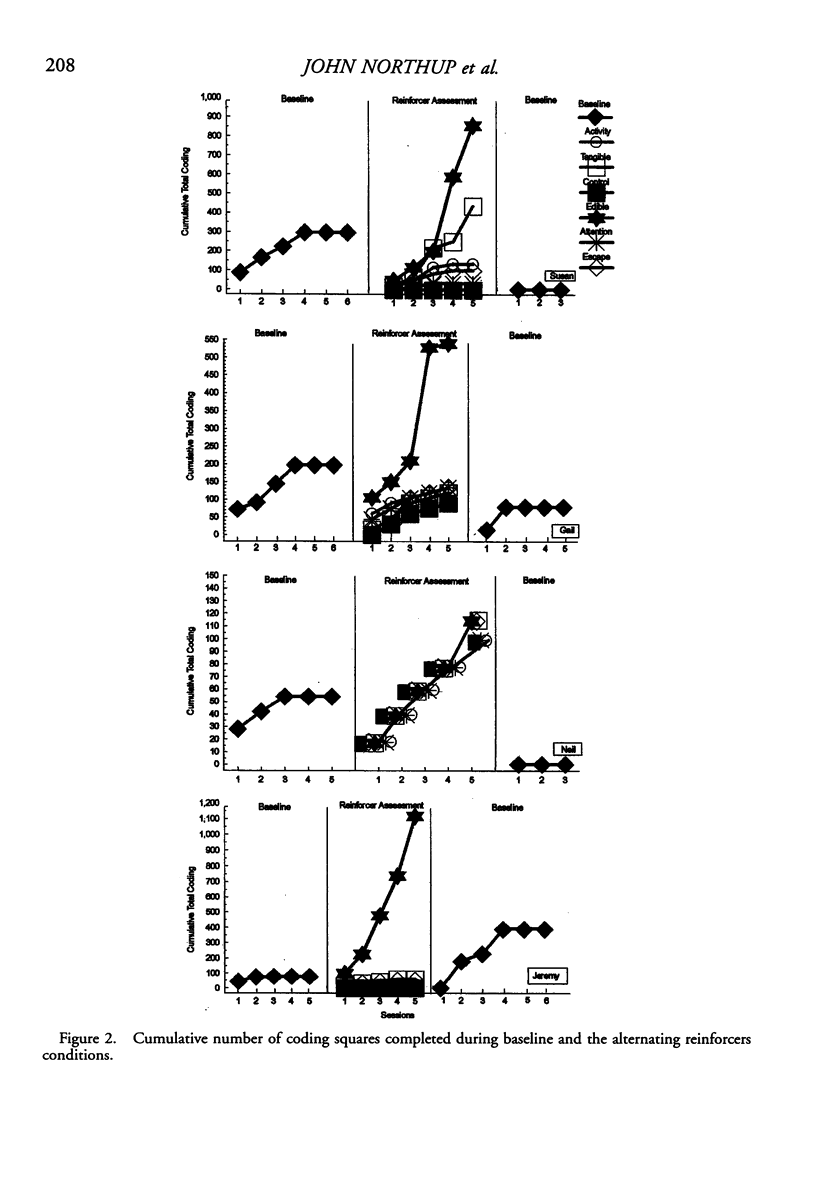
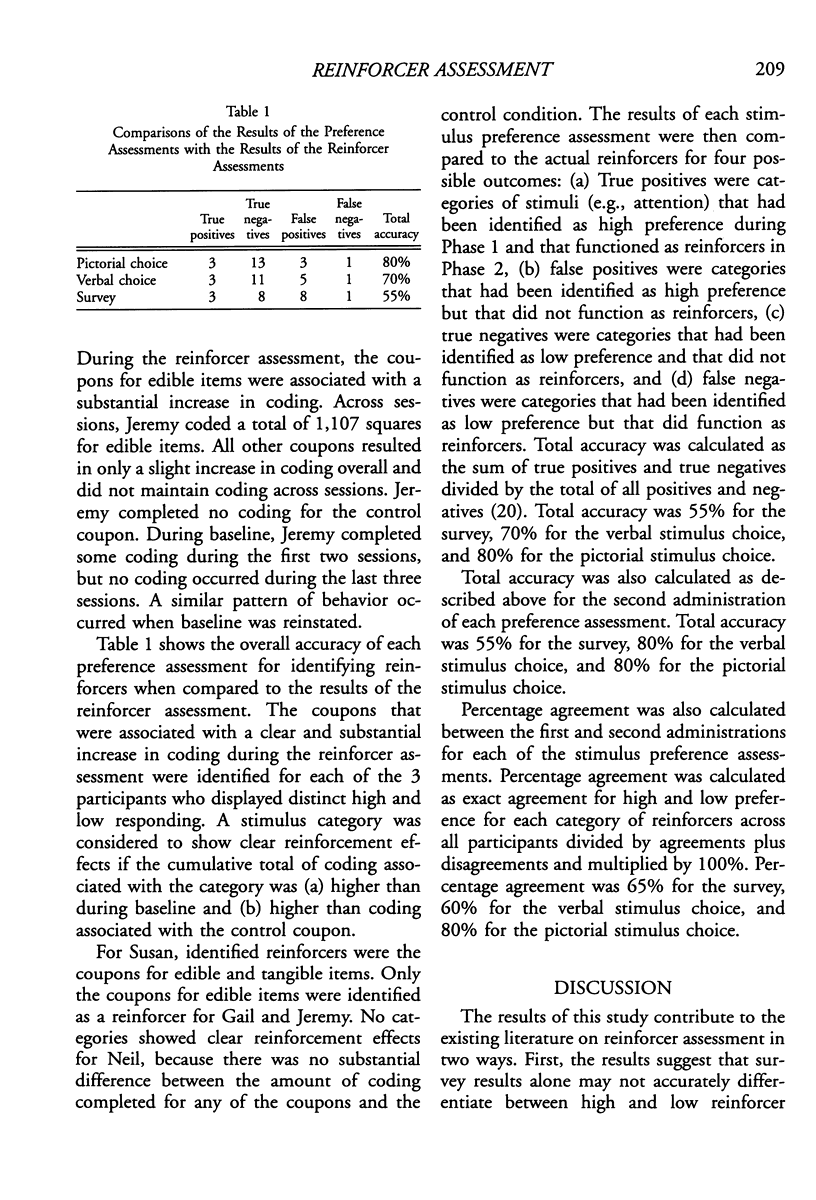
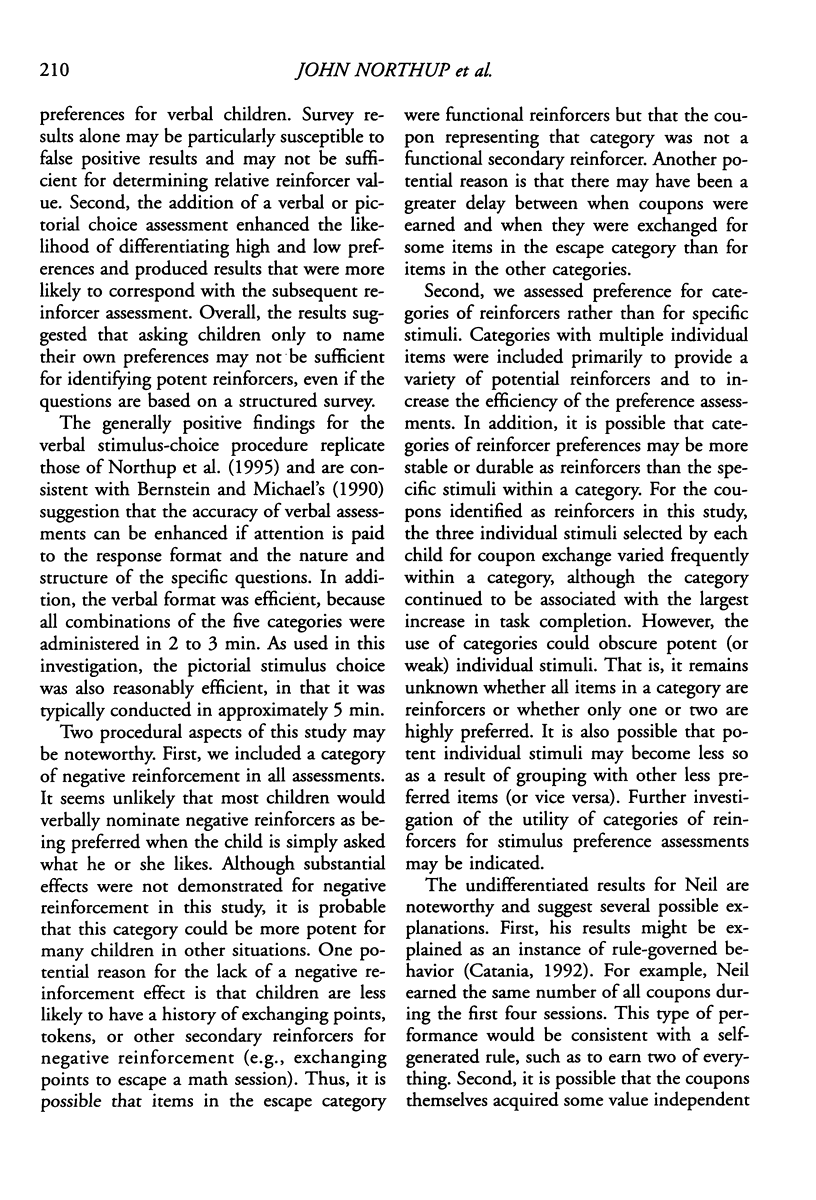
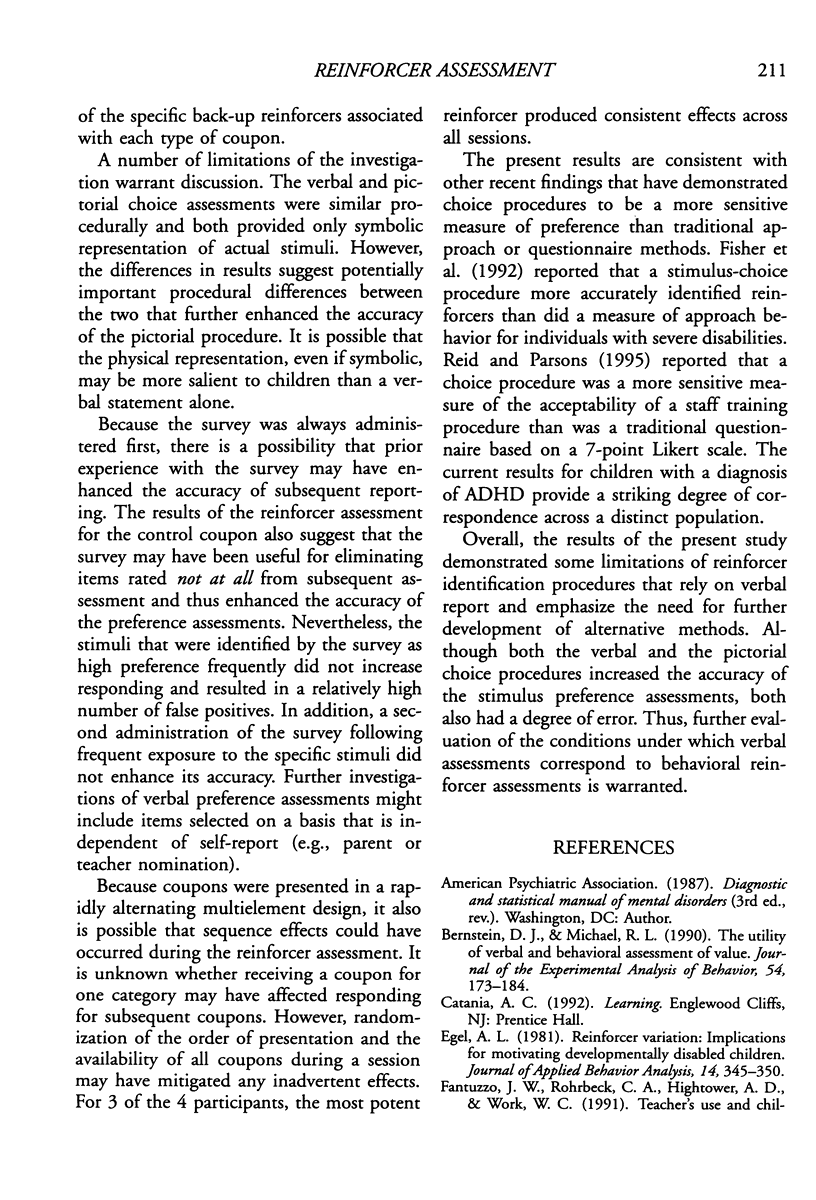
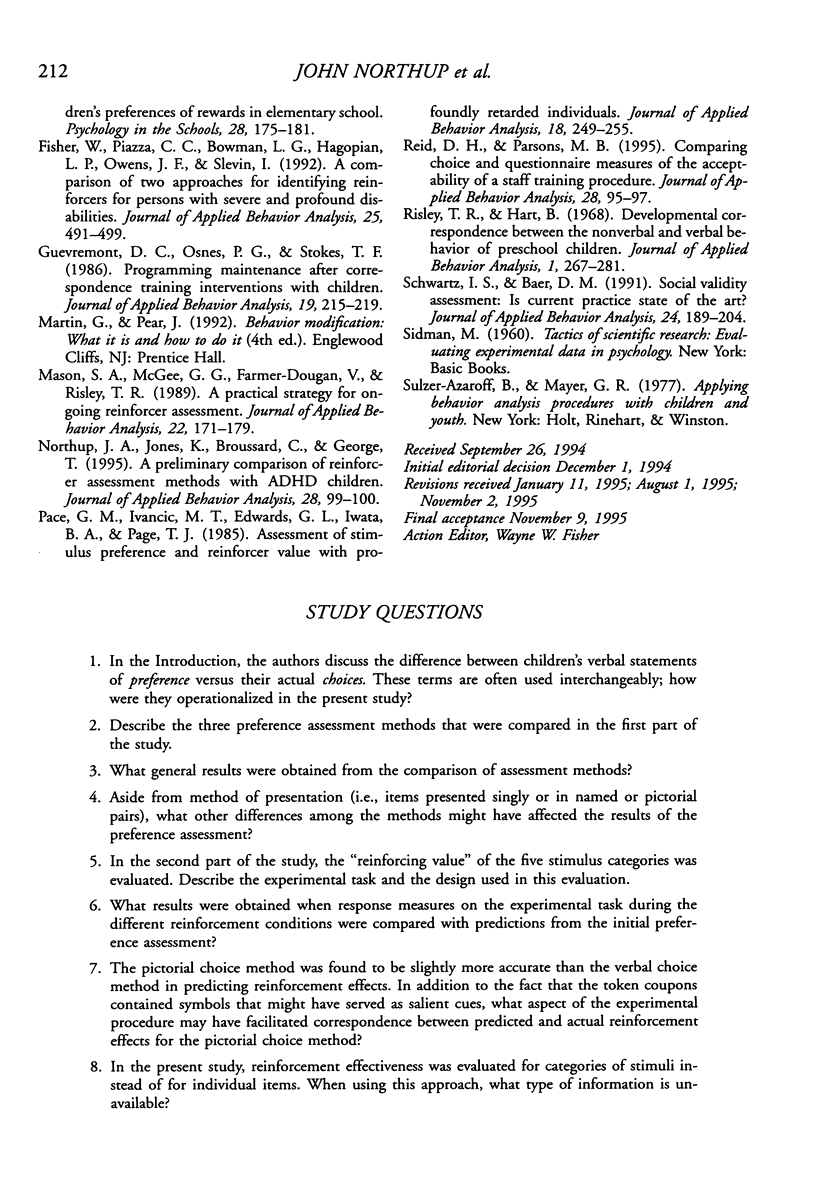
Selected References
These references are in PubMed. This may not be the complete list of references from this article.
- Bernstein D. J., Michael R. L. The utility of verbal and behavioral assessments of value. J Exp Anal Behav. 1990 Nov;54(3):173–184. doi: 10.1901/jeab.1990.54-173. [DOI] [PMC free article] [PubMed] [Google Scholar]
- Egel A. L. Reinforcer variation: implications for motivating developmentally disabled children. J Appl Behav Anal. 1981 Fall;14(3):345–350. doi: 10.1901/jaba.1981.14-345. [DOI] [PMC free article] [PubMed] [Google Scholar]
- Fisher W., Piazza C. C., Bowman L. G., Hagopian L. P., Owens J. C., Slevin I. A comparison of two approaches for identifying reinforcers for persons with severe and profound disabilities. J Appl Behav Anal. 1992 Summer;25(2):491–498. doi: 10.1901/jaba.1992.25-491. [DOI] [PMC free article] [PubMed] [Google Scholar]
- Guevremont D. C., Osnes P. G., Stokes T. F. Programming maintenance after correspondence training interventions with children. J Appl Behav Anal. 1986 Summer;19(2):215–219. doi: 10.1901/jaba.1986.19-215. [DOI] [PMC free article] [PubMed] [Google Scholar]
- Mason S. A., McGee G. G., Farmer-Dougan V., Risley T. R. A practical strategy for ongoing reinforcer assessment. J Appl Behav Anal. 1989 Summer;22(2):171–179. doi: 10.1901/jaba.1989.22-171. [DOI] [PMC free article] [PubMed] [Google Scholar]
- Northup J., Jones K., Broussard C., George T. A preliminary comparison of reinforcer assessment methods for children with attention deficit hyperactivity disorder. J Appl Behav Anal. 1995 Spring;28(1):99–100. doi: 10.1901/jaba.1995.28-99. [DOI] [PMC free article] [PubMed] [Google Scholar]
- Pace G. M., Ivancic M. T., Edwards G. L., Iwata B. A., Page T. J. Assessment of stimulus preference and reinforcer value with profoundly retarded individuals. J Appl Behav Anal. 1985 Fall;18(3):249–255. doi: 10.1901/jaba.1985.18-249. [DOI] [PMC free article] [PubMed] [Google Scholar]
- Risley T. R., Hart B. Developing correspondence between the non-verbal and verbal behavior of preschool children. J Appl Behav Anal. 1968 Winter;1(4):267–281. doi: 10.1901/jaba.1968.1-267. [DOI] [PMC free article] [PubMed] [Google Scholar]
- Schwartz I. S., Baer D. M. Social validity assessments: is current practice state of the art? J Appl Behav Anal. 1991 Summer;24(2):189–204. doi: 10.1901/jaba.1991.24-189. [DOI] [PMC free article] [PubMed] [Google Scholar]


